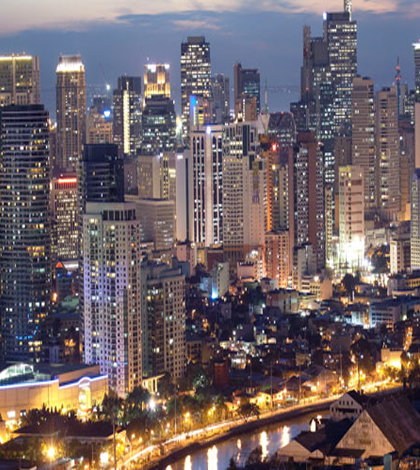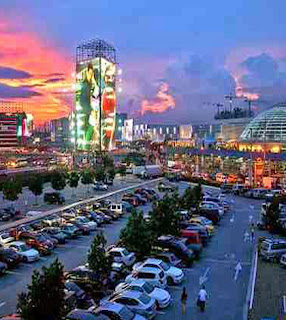
- Goggle builds faster internetPosted 25th of August, 2014
- Top pizza store in the PhilippinesPosted 14th of August, 2014
- Home your family will enjoyPosted 12th of August, 2014
- Jollibee...Hmmm ang sarap kumainPosted 10th of August, 2014
- Beautiful places to see in Cavite, PhilippinesPosted 7th of August, 2014
- OFW business desisionsPosted 28th of August, 2014
- Juday hosts I do reality showPosted 6th of August, 2014
- How much can you borrow from Pag ibig FundPosted 6th of August, 2014
-

Beautiful Things To See in Cavite, Philippines
The Province of Cavite, Philippines offers awesome tourist attractions, magnificent beaches, hot spring resorts, colorful festivals, hundreds of scenic spots and world-class hotels and facilities.
-

Manila, Philippines is the best place to be an expat
Forget Singapore, forget Hong Kong. Manila is the best place to be an expat – and 12 expats will tell you why.....
-

Top Malls in the World
Ever wonder what and where are the biggetst Malls? Here is a list of Top Malls in the World as of 2013, arranged from smallest to biggest.
-

Save Some Pesos out of your House Expenses? Yes you can!!!
According to that report of Philippine Financial Literacy Advocacy Report 2013 by Sun Life Philippines, Filipinos spend around 37% of their income on food, which is the largest portion of the pie. Below is an info graphic that shows more details...
-

5 Ways for OFW to Invest in the Philippines
Most will find themselves putting their money in small businesses that their families can run in their stead; others will start savings accounts and allow the money they deposit to earn interest. There are other ways to grow one’s hard-earned money, such as investing.
-

Jollibee, Hmmm Ang Sarap Kumain...
JOLLIBEE…I remember some time ago, just came home from a day of teaching when I first heard my two year old boy utter the word in succession..


Thursday, April 7, 2016
Suntech Ipark taps Globe as ICT Partner

Wednesday, March 30, 2016
GT Capital raises stake in Profriends
GT CAPITAL Holdings, Inc., the holding company for tycoon George S.K. Ty’s businesses, is raising its stake in mass housing developer Property Company of Friends, Inc. (PCFI) starting this year.
“The plan is to increase first to 42% within the first half of the year and then to 51% by the first quarter of next year,” Mr. Bautista said.
In August last year, GT Capital signed an agreement to acquire 22.68% of PCFI for P7.24 billion, subject to closing conditions, with an option to boost its stake to 51% within the next three years.
Profriends Group, Inc., which was planning on undertaking a P7.7-billion initial public offering (IPO), owns 98.51% of the issued and outstanding capital of PCFI, an affordable housing firm.
Asked if PCFI will pursue the IPO, Mr. Bautista said: “Not in the near future.”
Based on its previous filing, Profriends was planning to sell 385.750 million primary common shares, representing 11% of the company’s outstanding capital stock, at maximum price of P20 apiece to finance the development of its projects and land banking initiatives.
Profriends obtained the approval of the Securities and Exchange Commission (SEC) to launch the equity offering, but failed to secure the go-signal from the Philippine Stock Exchange (PSE).
Profriends had tapped First Metro Investment Corp. (FMIC) as its underwriter for the IPO. FMIC is the investment banking arm of Metropolitan Bank & Trust Co., which is part of GT Capital.
PCFI netted P2.1 billion last year after booking P7 billion in total revenues. GT Capital started consolidating its financial performance in September.
“GT Capital’s recent acquisition of PCFI further expands the group’s range of products and market presence in the property development sector,” Federal Land, Inc. Chairman Alfred V. Ty said in a statement last week.
Aside from Federal Land and Metrobank, GT Capital has interests in Toyota Motor Philippines Corp.; Toyota Manila Bay Corp.; Toyota Cubao, Inc.; Toyota Financial Services Philippines Corp.; Global Business Power Corp.; Philippine AXA Life Insurance Corp.; and Charter Ping An Insurance Corp.
The conglomerate reported a 32% uptick in bottomline to P12.1 billion last year from P9.2 billion in 2015, driven by the strength of its automotive and power generation businesses.
Shares in GT Capital added P16 or 1.12% to close at P1,450 each last Wednesday.
Wednesday, February 10, 2016
Cavite LRT extension project in full swing
House and Lot for Sale
This was after the group of Ayala and MPIC – Light Rail Manila Consortium (LRMC) – on Friday, February 12, signed the P24-billion ($506.02-million) loan facility and the engineering, procurement, and construction (EPC) agreement for the LRT1 Cavite extension deal.
The Department of Transportation and Communications (DOTC) awarded the LRT1 Cavite extension project to the LRMC in September 2014.
"These milestone agreements give us significant headway towards the construction and commissioning of the much-awaited Cavite Extension which will benefit an additional 300,000 passengers from four big cities in southern Manila," LRMC president and CEO Jesus Francisco said.
LRMC signed the 15-year Omnibus Loan and Security Agreement with Metropolitan Bank & Trust Company (Metrobank), Security Bank Corporation and Rizal Commercial Banking Corporation (RCBC), with P15.3 billion ($322.59-million) of the total loan amount allocated for the Cavite extension and P8.7 billion ($183.44-million) for the rehabilitation of the existing LRT1 system.
Stalled relocation of illegal settlers
But according to Francisco, unfinished right-of-way acquisition and stalled relocation of illegal settlers take a toll on the construction of the LRT1 Cavite extension.
"Our main concern is that there are still some ISFs – illegal settlers. But we got the report of the grantors that by April, they expect to do relocation of most of them, if not all of them," Francisco said.
As of today, the chief of LRMC said the government has delivered about 95% of the right-of-way acquisition.
IMUS HOUSE FOR SALE
"We think that the stations will come later, but first we have to start building the carriage way. April is when they said they would address the problems of the ISF. If they can really move, by June 1 we will be able to start," Francisco told reporters on the sidelines of a briefing in Makati City.
French firms as contractors
LRMC took on French companies Bouygues Travaux Publics and Alstom Transport Private Limited to help build the extension.
Francisco said that LRMC and contractors Bouyges Travaux Publics and Alstom Transport are set to commence the construction of the 11.7-kilometer Cavite extension once right of way is delivered by the DOTC and Light Rail Transit Authority (LRTA).
The extension is targeted for completion in about 4 years after the delivery of right-of-way.
The 11.7-kilometer Cavite extension will link with the existing system immediately south of the Baclaran Station, and run in a generally southerly direction to Niog, Cavite.
Eight new stations will be provided with 3 intermodal facilities across Pasay City, Paranaque City, Las Pinas City and Cavite.
The new stations are Aseana, MIA, Asia World, Ninoy Aquino, Dr Santos, Las Piñas, Zapote and Niog. The intermodal facilities will be located at Dr Santos, Zapote, and Niog.
The commercial speed of the Cavite extension will be 60 kilometers per hour.
LRMC said the new stations will be accessible to and from nearby community facilities such as shops, schools, stadium, and park.
Bouygues Travaux Publics, which will provide the railway infrastructure, is known globally for complex projects involving tunnels, engineering structures and road, port and rail infrastructure.
Among its recent projects are the Hong Kong–Zhuhai–Macao Bridge, the Port of Miami Tunnel, and the Nîmes-Montpellier rail bypass in France.
Under the agreement, Alstom will provide system integration and project management; build a new train depot; extend the existing depot complete with track works; and establish a new power supply, catenary lines, and signaling and telecommunications system.
Alstom will also modernize the signaling system of the existing 20.7-kilometer line, which runs from Roosevelt Avenue in Quezon City to Baclaran.
Source: Rappler.com
Tuesday, January 12, 2016
About Power Bank and its Helpful Tips
Thursday, November 5, 2015
Housing Project brings jobs for residents
I frequented this city many times in the past. Each time I visit, the city seems to be cleaner and more efficient.
Townships
Labels
Popular Posts
-
According to that report of Philippine Financial Literacy Advocacy Report 2013 by Sun Life Philippines, Filipinos spend around 37% of thei...
-
For majority of overseas Filipino workers (OFW), their overseas job contracts is only temporary. So as early as possible, it is advisabl...






